#Seminars
Text
#tedtalk
#youtube#redlettermedia#red letter media#rich evans#jay bauman#gorilla interrupted#half in the bag#mike stoklasa#best of the worst#jack packard#seminar#seminars#ted talk#ted x#ted x talk#ted talks#ted x talks#speaker#speakers#motivational speeh#motivational speaker
12 notes
·
View notes
Text
23-09-22
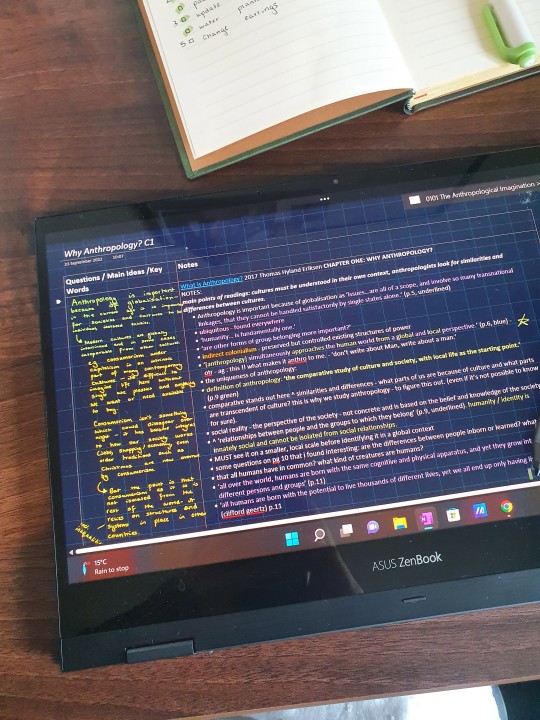
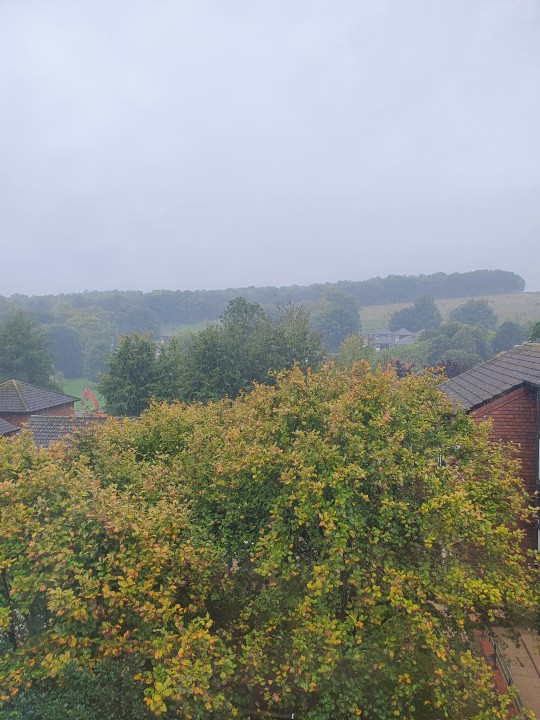
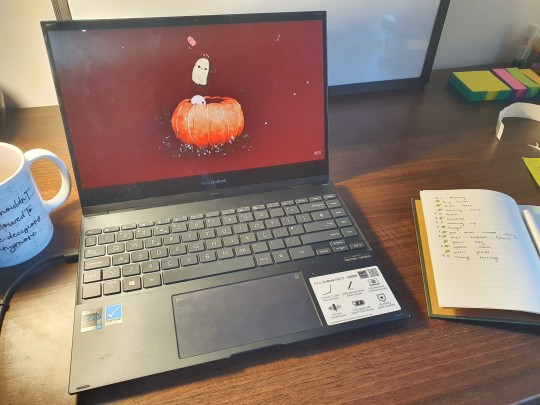
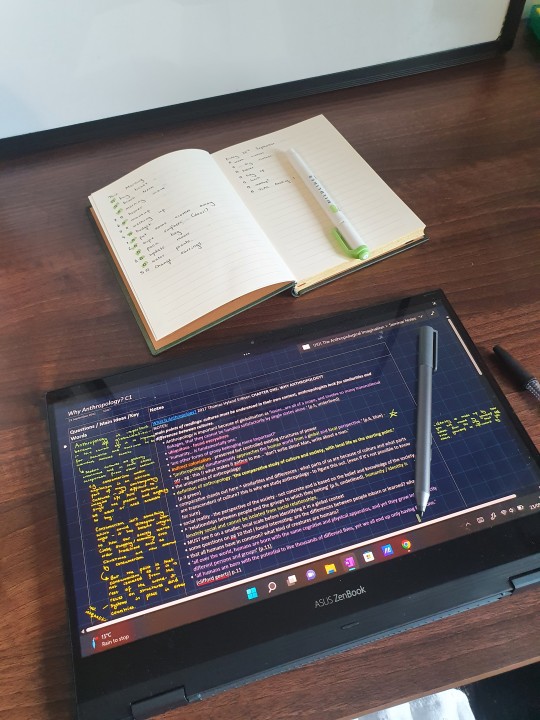
Today I'm starting work (properly) on my reading for the first week of lectures. I also managed to change my optional module from law to criminology! :)
#studyblr#studyspo#new studyblr#new studyspo#gcsestudyblr#studying#study motivation#ib#ib m22#maths#starting university#university student#university tips#anthropology studyblr#anthropology#uni reading#lectures#seminars#criminology university#education#study desk#deskspo#studywithme
63 notes
·
View notes
Text
Colour Theory Seminar {Part 1}
Hey Tumblr,
Today I went back and watched the colour theory seminar, I had watched it before but decided to re-watch it to take notes on and post about it.
Colours can be perceived differently depending on what you're looking at it from, for example it will look different on a laptop or phone from a piece of paper. There are different factors such as the calibers of equipment, if your printer is running out of ink or even the lighting your looking at it from.
Test cards are physical cards which are held in front of cameras used for calibrating alignment. They're made up of patterns to adjust the receiver in televisions and to make sure it's displaying the colours correctly.

The Pantone Colour Matching System (PMS) is used to communicate through colour and to keep consistency throughout various materials and finishes. People and manufacturers use it to refer to to make sure they're colours match one another. It uses the CMYK process which is standard for most printer worldwide.

Each year Pantone pick a colour of the year, which in 2020 was Classic Blue 19-4052 which is seen as "a restful colour" and "brings a sense of peace and tranquility".
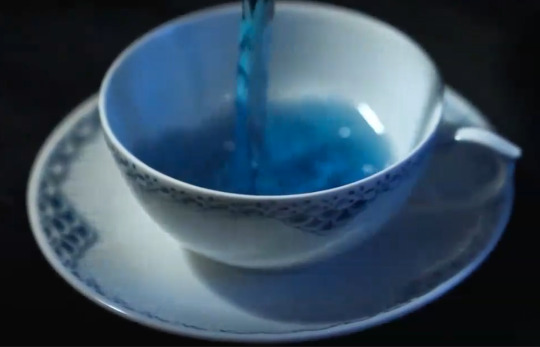
In 2021 they picked Illuminating 13-0647 and Ultimate Gray 17-5104. They grey is a flat colour in the middle of the spectrum, where as the yellow is an artificial florescent colour. By putting the yellow next to the grey it enhances the viewers perception of the yellow, giving it a metallic taint,

Fine artist Janine Antoni made a performance piece called 'Loving Care' in 1993. She mopped the floor of the gallery with her hair soaked in loving care hair dye colour natural black. This act was linked to mopping but also to abstract expressionist painting.
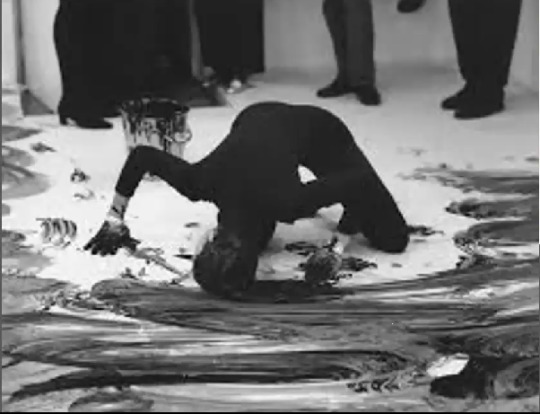
The London Underground map, made in 1908, uses lines of different colours to show different train lines. The map shows how the lines actually look throughout London so it doesn't show the Metropolitan line fully. In 1933 Harry Beck redesigned the map. He used vertical, horizontal and diagonal lines to simplify it. It shows individual stations and connecting stations. Although easy to read it looks like nothing the city of London.
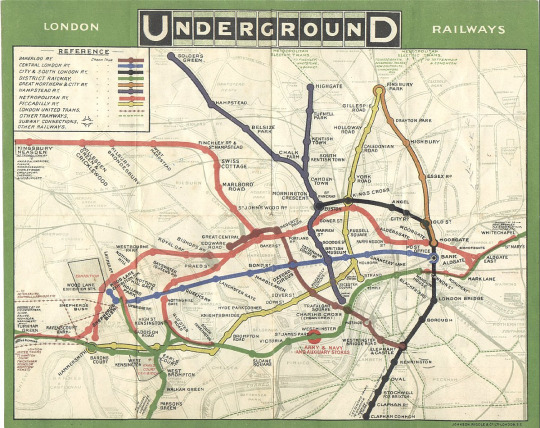

Another example of colours being used is in road signage. Signs today look different to how they did back in the 30's and even the 80's, with todays being simplified. Brown indicating area of historical interest, white signifying placenames and yellow showing roads. Between 1957-1976 two british graphic designers created signage for the UK motorways by asking themselves, 'what would I like to see when I'm driving?'. At night the signs are slightly illuminated and are made so the letters are still visible. The colours help indicate what's ahead even if the driver didn't read what the sign said.
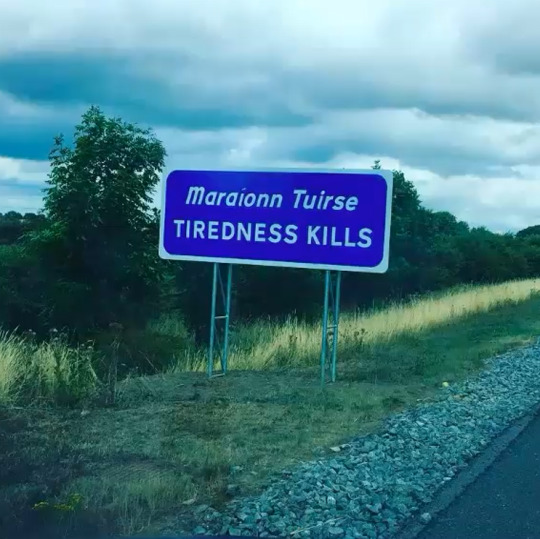
Colour is also an indicator of identity. In Ireland post boxes used to be painted red to show British rule over Ireland. In 1922 the Irish government ordered all post boxes be painted green.

This is all from part one of the seminar, I'll make a separate post about part two as I feel it would be too long of a post if I did them both together :)
6 notes
·
View notes
Text
David Thien Anh Luong the Ways in Which Employees of a Business Can Be Empowered
In the course of running a business venture, there are a lot of things that you need to pay close attention to but one of the most important elements that you need to be careful about is the way in which your employees are empowered to work to their best efficiency. There are a lot of business ventures that may have a lot of employees with the potential to do wonders for the company. However, there are very few businesses that offer a free hand to the employees to do all that they can for the betterment of the business that they work for. When you want to make sure that your employees give their very best, you need to make it a point to Let them work to the best of their abilities. According to experts like David Thien Anh Luong among All the Ways in Which Employees Add Value to a Business Venture, the most important method is to give them the freedom to work.

There are a lot of ways in which you can make sure that employees not only get a freehand to work according to their own skill and potential but also get motivated to take more initiatives. Here are a couple of things that can be done to make sure that your employees put their best foot forward when it comes to taking the company forward:
Enabling Approachability:
The employees of a company should be made to feel like the authorities are approachable and that the members of the team are welcomed when they have something new to share with the business. This implies that the business owners or managers are open to new ideas and are ready to try out new things when it comes to taking the venture forward. If the employees feel like their voice will be heard, they are more likely to speak up and share ideas for the growth of the venture.
Allowing Anonymous Feedback:
Constructive criticism is also important for the growth and development of a company which is why the employees should be allowed to offer anonymous feedback or suggestions for change. The employees that want to make a real change in the business and make it more progressive should be able to express themselves in every way possible so that the building of the business can be enhanced and improved with each moving step. This is one reason experts like David Thien Anh Luong express Why You Need Experienced Employees to Handle Sensitive Business Functions, so that they can take criticism in the same stride as praise.
Workshops and Seminars:
When you want to truly empower your employees to work to the best of their abilities, it is also important to keep honing their skills. The introduction of workshops and seminars can be a good way to Make sure that the employees are able to develop their skills and channelize them in the right way.
43 notes
·
View notes
Text
How I use 'networking' to my advantage.
Last weekend I attended the Australasian Society of Lifestyle Medicines' annual national conference, in sunny Cairns, Australia.
I was fortunate enough to attend the conference on a student scholarship for my systematic review of reviews on CBD interventions within autistic population. I presented an academic poster that visually displayed and outlined the background, aims, methods and results of my research review.
This was my first national conference and I learnt a lot from the oral abstract presentations and academic posters. However, my main take away from my experience was the ability to network. Yes, you may say! thats the point! Conference are for networking . . . . .
No. I am talking about strategic networking and if there is one thing I learnt from my time in tourism marketing, it's how to strategically network.
Network with intention, having a purpose for making the connection is key here!
Ask yourself how the connection could benefit you
Ask yourself how you could benefit the connection
Pitch with purpose
Follow up with actions
e.g.
I watched a presentation this past weekend looking at a bio-psychosocial screening tool used in clinical general practice for intervention prevention.
How did this potential connection benefit me? I wanted to adapt the screening tool for research purposes.
How can I benefit the potential connection? I want to work with the connection to further adapt, implement and publish the screening tool for research.
I pitched with purpose! I introduced myself, my research and affiliations (elevator pitch) and specifically how I wanted to adapt the screening tool for my research - I kept it short and was offered a business card from the connection instantly afterwards.
I followed up with actions via email, I re-introduced myself, where we met, the reason for reaching out and how I intend to action my original pitch.
Long story short . . . . . a new project is in the pipeline and it took me less than 5 minutes in total to make the connection.
Save yourself and your potential connections the small talk by setting intentions for your networking and walk away with opportunities, NOT just linked-in connections.
StudywithMaddi x
#lifestyle medicine#phdblr#networking#academic success#connections#research#evidencebased#conferences#workshops#seminars#studentblr#studyblr#research purposes#neurodivergent#cannabidiol#autism spectrum disorder#autistic community#autism research#studywithmaddi
30 notes
·
View notes
Photo
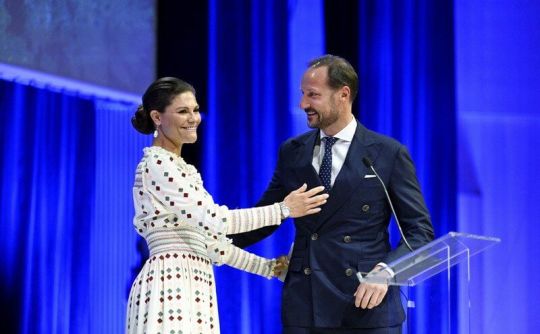
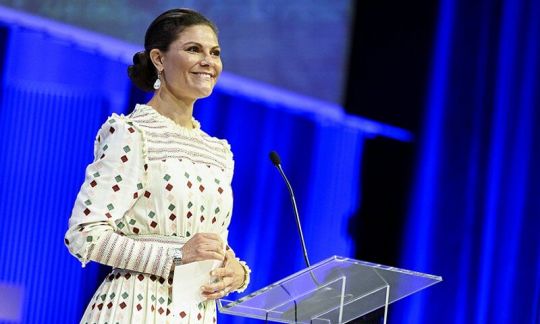
May 2, 2022: Crown Prince Victoria and Crown Prince Haakon participate in a seminar at the Karolinska Institute in Stockholm on the first day of the Crown Prince couple’s three day visit to Sweden.
#crown princess victoria#crown prince haakon#haakon and victoria#swedish royal family#norwegian royal family#may 2022#haakon and mette-marit in sweden 2022#victoria's engagements#haakon's engagements#seminars#mine
32 notes
·
View notes
Text
Composition Seminar
Composition is about creating a whole that's greater than the sum of its parts
It dictates the feeling and atmosphere of a piece as a whole
Good composition requires both thinking and intuition
Thumbnail sketches are useful to achieve good composition
Simplifying objects into basic shapes helps to organise them into a more pleasing composition, to analyse and use space well
Everything is composed - other artists works, architecture, marketing. See the world as composition and use it in your art
Don't be confined by a4, a5, or other pre-decided dimensions. Use the size and shape that suits your work
Main elements of composition:
Line - visual path, where the eye follows
Shape - area that is defined by edges, positive or negative space
Colour - vibrant or muted
Texture - actual, 3d elements or implied texture
Value - lightness and darkness
Form - 3d and 2d qualities
Principles of composition:
Balance - Stability, symmetry or asymmetry
Emphasis - An element given dominance
Harmony - Order of all elements to contribute to whole
Movement - Arranged to be active, move the viewers eye
Depth - Creating a 3d effect
Space - Space taken up (positive) or between (negative) elements
Pattern - Repetition of an element
Proportion - Comparative relationship of one element to another
Tension - Keeping tenuous balance
Unity - Harmony and variety together
Variety - The use of diverse elements
Contrast - Creating interest that draws the eye
Coherence - Successful use of unity and other principles
Positive and negative space
While these principles are important to learn and keep in mind, they aren't a checklist to good composition. Intuition is also an important factor.
7 notes
·
View notes
Text

#Roma#Gypsy#Prague#Praha#Czechia#Festival#Music#Romani#awareness#art#culture#seminars#events#Khamoro#khamoro2023#Slovo21
2 notes
·
View notes
Text
thought of the day: i hate socratic seminars
2 notes
·
View notes
Text
[seminars part 2]
the second part of my seminars booklet :))
5 notes
·
View notes
Text
Greetings colleagues, friends and siblings:
As we approach the upcoming Pride Month (June) observed in the majority of U.S. territories and abroad, I want to remind folk I am available for tokenization…I mean…work related innovative and interactive seminars and other thought provoking conversations on the LGBTQi2S-QTBIPOC sphere.
Feel free to share, reblog this flyer among institutions, companies or other entities participating in the annual rainbowfication of logos and campaigns for this post-covid-ish upcoming Pride Month.
Despite the corporate nature Pride Month has undergone, We would still like to remind folk that, grassroot efforts continue to be under-represented in the midst of the battle of the blue check marks. No tea no shade but read: Fame does not always grant knowledge on the work shadow living creatures like me continue to innovate and teach…and chiiiiile do not roll your eyes on me, I’m still your Yelder.
This is your annual reminder to book grassroots for your upcoming Pride affairs.
Gracefully in Service,
Marie Angel Venarsian
Multidisciplinary Expert
Founder MsVenarsian Consulting

10 notes
·
View notes
Text
Seminars
As advised during my progress review, I went back to rewatch and catch up on the seminars on moodle.
Today I caught up on rewatching the first half of the seminars.
Exploring ideas- part 1
-dont be afraid of ideas / concepts
-encouraged discuss and share ideas with peers
-on going concept devlopment
-trust the process and critically reflect + evaluate work
-draw
-concepts can be anything; colour, processes, connecting things ect
Exploring ideas- part 2
-"best way to have a good idea is to have lots of ideas"
-small gap between quantity and quality of ideas, more small ideas = more good big ideas
-exposing myself to new experiences such as new music, new movies ect could lead to new ideas
-note those new ideas immediately
Drawing seminar- part 1
-drawing is a way of talking to people through art
-practice drawing as it is a skill, everyone can draw
-people draw from what is around them/what influences them
-choice of style for artwork has an affect on the final outcome of an artwork
Drawing seminar- part 2
-dont be afraid to go back to things youve already drawn
-try to draw in the actual space / setting of your objects instead of taking a photo and drawing from a photo
-drawing in the actual space helps get the essence of your subject
Ideas development seminar
-research book
-bullet points work
-opinions about art
-historical and modern relevance of ideas
-can judge success of ideas
-concept, plan, opinions
-critically reflect
colour seminars
-copyrighted colours: worlds blackest black
-artifical and natural are examples of colour
-test cards to set up tv cameras
-pantone colour matching system
typography seminar
-the way "type" is displayed
-huge history behind it
-printing press made it accessible
-basis for how we communicate
-everywhere: producs, bus stops, signs ect
Creative recording seminar
-time based art: photos or videos
chris burden-747
Composition seminar
-applies to everything and is foundation of image making
-variation has no limits
-the arrangement of visual elements such as shapes, pattern, colour ect
-main elements: colour, form, line, shape, texture, value
-principles: balance, emphasis, depth, movement, contrast, tension ect
-shape of canvas affects image
Relief print seminar
-image manipulation
-everywhere: even armor -> etching
-4 main groups- relief block print, intaglio print, lithography and screen print
-print; mark on surface which is then transferred to other surfaces, allows for copies
-also utilized in other areas such as lino cast in plaster for large scale pieces broken into blocks
-accessible process that can be done everywhere
Form development seminar
-clay has a lot of potential
-soft-> print rolled, pressed, mold, shape, sculpt.
-melts with water
-can cast and recycle it
-ceramic is fired clay
-prototypes can be made from paper
-craft led practice: jack doherty
-design led process: ann mcbride
-surface: paul scott
3d studies seminar
-core element
-engagement with physical and tacticle elements
-artist: ruth asawa- wire that has been hand twisted
Tumblr seminars
-explain how everything is related to "temporary" theme
-research
-edit on pc as it looks different on a phone
-edit photos properly
3 notes
·
View notes
Video
Discover upcoming local events of any kind. Concerts, Sports, Nightlife and more.
#events#nightlife#concerts#festivals#art#sports#party#recreation#shows#expos#workshops#conferences#seminars#competitions#whatodoo
2 notes
·
View notes
Video
Discover upcoming local events of any kind. Concerts, Sports, Nightlife and more.
#events#nightlife#concerts#festivals#art#sports#party#recreation#shows#expos#workshops#conferences#seminars#competitions#whatodoo
2 notes
·
View notes
Text
Towards a Pact for the Future.

In Our Common Agenda, the UN Secretary-General, António Guterres, stated ‘humanity faces a stark and urgent choice: a breakdown or a breakthrough’. Multiple crises such as growing inequalities, conflicts, climate change and biodiversity loss are posing severe threats to the world. This is the context in which the Summit of the Future: Multilateral Solutions for a Better Tomorrow will take place on 22-23 September 2024. The Summit aims to enhance cooperation on critical challenges and address gaps in global governance, reaffirm existing commitments – including to the Sustainable Development Goals (SDGs) and the United Nations Charter – and move towards a reinvigorated multilateral system that can effectively tackle the challenges of today and tomorrow for the sake of humanity. An action-oriented outcome document, the Pact for the Future, is currently being negotiated by Member States through a detailed intergovernmental process.
In realizing this future-oriented vision for all, the academic community has a key contribution to make, which is why the UNESCO Chairs, UNITWIN Networks, and other research partners came together for the first in a new online series of UNESCO Chairs Seminars to discuss the global issues addressed in the draft Pact for the Future. This series is held in parallel to the fast-evolving intergovernmental negotiation process with the aim of creating synergies in the run-up to the Summit of the Future and beyond. Active participation by UNESCO Chairs in the first seminar demonstrated their high level of interest in key issues for sustainable development. Sobhi Tawil, Director of UNESCO’s Future of Learning and Innovation Division, in opening the Seminar observed that “the collective intelligence and interdisciplinary expertise” of UNESCO Chairs and UNITWIN Networks constitute an invaluable contribution to UNESCO’s priorities, and the current concerns and discussions at the international level.
In presenting key features of the draft Pact, Caroline Siebold, Executive Officer, Bureau of Strategic Planning at UNESCO, highlighted the objectives and main issues to be addressed at the Summit of the Future. The Summit is a chance to reinvest and recommit to a multilateral system that delivers for all, and to cooperate better to advance shared aspirations and goals, in particular the SDGs. She emphasized that this also meant leveraging the strengths and contributions of different stakeholders for a multilateral system that is more inclusive and effective, and that can address emerging and complex challenges. She further stressed that there was a spotlight on the importance of science, technology, innovation, and digital cooperation, and on the need to re-establish trust in science.
The multilateral system, decision-makers, and policy-makers need more than ever to be able to rely on research insights, science and knowledge. It was, therefore, only fitting to organize this discussion with the network of UNESCO Chairs, whose work is to fulfil this ambition of bridging research and policy-making, as well as to educate the next generations of researchers. In Caroline Siebold’s overview of the various chapters of the draft Pact, she also highlighted areas in the text that need strengthening from the point of view of UNESCO’s mandate, including a more prominent positioning of education; the importance of fighting misinformation, disinformation and hate speech – including as a contribution to peace and security; the role of culture; the need for financing in these areas, and more. Many of these areas have been addressed in inputs by Member States for the second reading of the draft Pact.
Scope of the Pact
Whilst it was acknowledged that it is difficult to get everything into one document, and that the scope of the Pact for the Future aims to address policy gaps, sustainability is very explicit in the current text in the three dimensions advocates have been pushing: environmental, economic and social. Vernor Muñoz Villalobos, Head of Policy & Advocacy, Global Campaign for Education, also strongly underscored the need to see the Pact as a way of reinforcing human rights commitments. The Pact for the Future will require, he argued, effective monitoring and follow-up mechanisms, and the United Nations should call to account those who hinder the advancement of human rights. It is challenging to close the gap between rhetoric and practice, he stressed, saying “nothing hurts more than broken promises”. In the context of climate change, some speakers suggested that the Pact should specifically try to link human rights with environmental rights.
Speakers also emphasized the role of civil society participation as essential, not only to bring the Pact for the Future to fruition, but for an inclusive and vibrant United Nations systems. Katrin Kohl of the UNESCO Chair in Reorienting Education towards Sustainability, York University, Canada, underscored how academia can take up the role as an advisor to civil society to enable those who might feel that the UN is too detached from local realities. A Civil Society Conference will be organized in Nairobi, 9-10 May 2024 as part of the Summit of the Future process and the academic community could engage.
“It's important to have a political agreement on how to realize and enforce human rights stated in the international instrument of human rights.”
Vernor Muñoz Villalobos
Two chapters of the zero draft directly deal with priorities for UNESCO: the chapter on science, technology, innovation and digital cooperation, and the chapter on youth and future generations. Whilst there is a reference to open science, it was felt in the discussion that more reference should be made to UNESCO's 2021 Recommendation on Open Science. A Global Digital Compact will be annexed to the text, which is a positive development as addressing digital divides that will have ripple effects across all other divides. Linkages with UNESCO's Guidelines for the Governance of Digital Platforms and the 2021 Recommendation on the Ethics of Artificial Intelligence were highlighted. The draft chapter on youth and future generations builds on the 1997 UNESCO Declaration on Responsibilities towards Future Generations and is taking the important perspective on future generations further. Yet, it is necessary to move beyond standard models of youth engagement and recognize that youth voices are needed at all stages of the work of the multilateral system as change makers. Higher education institutions naturally play a vital role in this domain.
Knowledge, education, and culture: golden threads for sustainable development
A key theme running through the discussion was the nature of knowledge and the need for the Pact for the Future to integrate knowledge from the ‘Global North’ and the ‘Global South’ in a dynamic way. A unique feature of the UNESCO Chairs is their existing awareness of the need for anticipating and formulating new questions, creating new knowledge, revisiting what needs to be researched, how, and with whom they conduct the research, ultimately, informing new policymaking and connecting the policy-research, as well as policy-society nexus. Susan Osireditse Keitumetse of the UNESCO Chair on African Heritage Studies and Sustainable Development, University of Botswana, noted that the topic of co-creation of knowledge production also raises the issue of intellectual property rights, as knowledge from Africa, for example, is often misappropriated. Such issues will be addressed at a UNESCO Chairs and Partners Forum: Transforming Knowledge for Africa's Future in Addis Ababa, 25-27 September 2024.
“The key tenet of sustainable development is a balanced production and consumption of knowledge for the Global North and the Global South.”
Susan Osireditse Keitumetse
The relative absence of education from the draft of the Pact was widely discussed. Education, and the right to education, is a key foundation for peace and security, as well as conflict prevention, championing peace and global citizenship. Furthermore, whilst science, technology and innovation are mentioned in the Pact, it is largely in the context of economic development, yet its role goes beyond the economic sphere. Building futures literacy, capacities, and skills competences to open up different futures was raised in the debate. Futures thinking was the main approach of the 2021 UNESCO publication Reimagining Our Futures Together: a new social contract for education. Looking beyond the Summit of the Future, education is set to be a key component of the UN Second World Summit for Social Development, to take place in 2025.
There was also consensus that the roles of cultural heritage and creativity needed to feature strongly in the Pact as their roles in sustainable development have been underestimated. For example, culture fosters innovation within societies. Recent developments, such as the MONDIACULT Declaration and the Leaders’ Statement of the G20, which highlight the role of culture as a global public good and call for culture as a stand-alone goal in a future development agenda, should be referred to.
A question at the heart of the Seminar – and for the whole of the seminar series – is the role of UNESCO Chairs in taking forward the ideas and principles of the emerging Pact for the Future, in their various programmes of work and research, as well as through the collective wisdom of the entire network. One of the key contributions of this unique network, created to foster intellectual solidarity, is that UNESCO Chairs are already aware of the need to create new future-oriented knowledge through interdisciplinary and trans-disciplinary approaches, including engagement with policy-makers, according to Charles Hopkins, of the UNESCO Chair in Reorienting Education towards Sustainability, York University, Canada. This responsibility to contribute to a research-policy nexus, is keenly felt by the network. UNESCO Chairs, by virtue of their location within higher education institutions and their linkages to UNESCO, are often trusted as neutral knowledge brokers. The international network of UNESCO Chairs and UNITWIN Networks can leverage multiple knowledge and research systems, valuing diverse world views and co-creating knowledge. As a network, it can serve to overcome divides and contribute to evidence-informed understanding and intellectual cooperation, including on the key themes of the Pact for the Future.
An Overview of the Pact for the Future.

#University twinning and networking programme#unesco#pact for the future#intellectual cooperation#UNESCO Chair#future-oriented knowledge#policy-makers#interdisciplinary and trans-disciplinary approaches#seminars
0 notes
Text

Hi there!
Are you looking for a flyer design? Kindly inbox me.
#flyer#meetings#events#business#conference#corporate#work#venue#education#videoconferencing#teamwork#entrepreneur#seminars#lawyers#law#lawyer#legal#attorney#justice#advocate#realestate#realty#realtor#property#mortgage#broker#loanofficer#graphicdesign#usa#canada
0 notes